Basalt
Type of resources
Available actions
Topics
Keywords
Contact for the resource
Provided by
Years
Formats
Representation types
Update frequencies
-
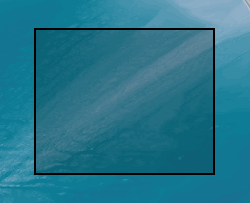
Analyses of volcanic glasses from a range of oceanic islands (Samoa, Cook-Australs, Iceland) and mid-ocean ridges (Reykjanes Ridge). Each glass sample was analysed for the concentrations of >60 elements, using a combination of electron probe microanalysis (EPMA), laser ablation inductively coupled plasma mass spectrometry (LA-ICP-MS) and secondary ion microprobe (SIMS) analysis. Detailed analytical techniques that were used to produce the data are presented in Wieser et al. (2020) and Reekie et al. (2019).
-

The dataset includes abundances of major, minor and trace elements, as well as abundances and isotopic ratios of organic carbon, of rock samples from a stromatolite-bearing horizon in the Mount Ada Basalt in the Pilbara Craton in Western Australia, 3.47 Ga. The section contains the oldest known large domal stromatolites. The data indicate hydrothermal nutrient sources and limited influx of felsic detrital material.
-

Major and trace element data for olivine- and plagioclase-hosted silicate melt inclusions, their host minerals, and associated matrix glasses, from Midfell, Snaefellsjokull and Oraefajokull, Iceland. Melt inclusion compositions are provided as measured, and corrected for post-entrapment crystallization. Reflected light images of the melt inclusions.
-

Data consist of electron microprobe, SEM, ICP-MS in laser and solution mode, and images of crystal mounts and thin sections, La Palma 2021. 35 samples of basalt, erupted during the 2021 Cumbre Vieja eruption on La Palma, Canary Islands, were collected in February 2022. The basalt samples were prepared for various kinds of analysis: powdered for ICP-MS (whole rock trace elements including chalcophile elements), made into thin sections for petrological analysis (imaged and mapped using Scanning Electron Microscope), and crushed and crystals picked and mounted for targeted microanalysis of melt inclusions, crystals using Electron Probe Microanalysis (EPMA, for major elements and volatiles S, Cl and F) and laser ablation ICP-MS (for trace elements including chalcophile elements). The overall aim of the project was to look at the chalcophile element abundance and distribution in the magmas feeding the eruption. The data here relate to a NERC Exploring the Frontiers project.
-
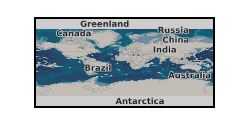
lectron probe analyses of the composition of plagioclase macocrysts from the 2021 eruption of the Fagradalsfjall eruption in Iceland. These were collected in profiles from rim-to-core and were designed for diffusion chronometry applications. This will be published in a article (in press in late 2022) in the journal Geology and with lead author Kahl. Analyses of a secondary standard across the many days of analytical sessions are also provided.
-
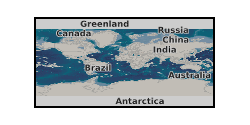
Vanadium and Zinc isotopic compositions of powdered basalt samples from the active volcanic zones of Iceland. These samples have been extensively characterised for other geochemical quantities in a series of papers (Marshall et al, 2022, Barry et al., 2014; Caracciolo, 2021; Caracciolo et al., 2020; Füri et al., 2010; Halldórsson et al., 2016a, 2016b; Macpherson et al., 2005; Rasmussen et al., 2020).
-
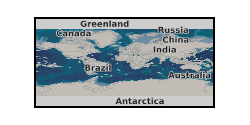
High precision electron-probe analysis of olivine compositions from a set of ocean island basalts. Accompanied by thin section scans and QEMSCAN (Quantitative Evaluation of Minerals by SCANning) compositional maps.
-
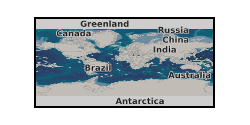
The data are magnesium (Mg) isotope composition, i.e. the relative difference of isotope ratios as defined in Coplen (2011, doi: 10.1002/rcm.5129). The reference was DSM-3 (see Galy et al., 2003, doi: 10.1039/b309273a) and data are given in per mil. Samples consisted of terrestrial peridotites and basalts as well as a suite of meteorites including chondrites, shergottites, diogenites and one angrite. A large portion of the data have been published in Hin et al. (2017, doi: 10.1038/nature23899).
-

Major, trace element and Pb isotope data are reported here for basalts recovered by drilling at the flanks of the Reykjanes Ridge, south of Iceland, during IODP Expedition 395C (2020-2022). The drilling targeted V-shaped ridges and V-shaped troughs forming the flanks of the Reykjanes Ridge. There were 4 sites drilled and sampled, and these include holes: U1554 (4F) - located on V-shaped trough 2B, holes U1555 (5I + 5G) - located on V-shaped trough 1, U1562 (2B), located on V-shaped ridge 3, and U1563 (3B) - located on V-shaped ridge 2A. Samples are predominately volcanic glasses and were recovered from cores drilled from up to 150m below the sediment-basement interface where they penetrated a series of pillow and sheet flow lavas. The sample name corresponds to the site, hole, core section and depth interval (see IODP Exp 395 site reports for details). Fresh volcanic glass was separated, cleaned in deionised water, picked under a binocular microscope to remove and altered material, cleaned again and then dissolved in HF and HCl prior to analyses. Major and trace elements abundances were analysed on an ICP-MS with a selection of geological reference materials (GRMs) used as standards. Pb isotopes ratios (206/204, 207/204 and 208/204) were measured on a neptune multicollector ICP-MS following using a double spike technique applied to the sample solutions. Reported here are the measured values of the GRMs and their uncertainties. The aim of this study was to test the hypothesis that the V-shaped ridges are the result of temperature and compositional pulses in a mantle plume, that is postulated to rise beneath Iceland and spread outward where it intersects the mid-ocean ridge to the south, and the effects of those pulses on climate over the last ~20Ma.
-

Multi-anvil experiments were performed both in static and deformation geometries on olivine polymorphs and MORB (Mid-Ocean Ridge Basalt) -composition garnetite. Faults were induced by uniaxial compression in both garnetite and wadsleyite but only the garnetite showed evidence of thermal run away to melting. These results suggest that strain localisation by thermal feedback might be an important mechanism for triggering deep earthquakes in the crustal portion of subducted slabs in the deeper transition zone (~500-660 km depth).
 NERC Data Catalogue Service
NERC Data Catalogue Service